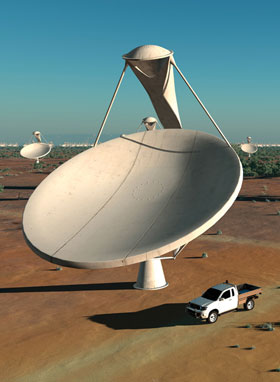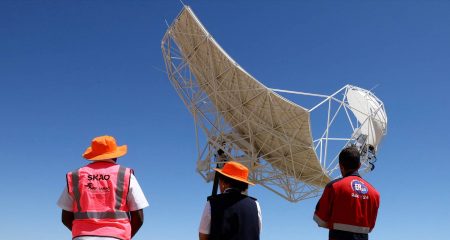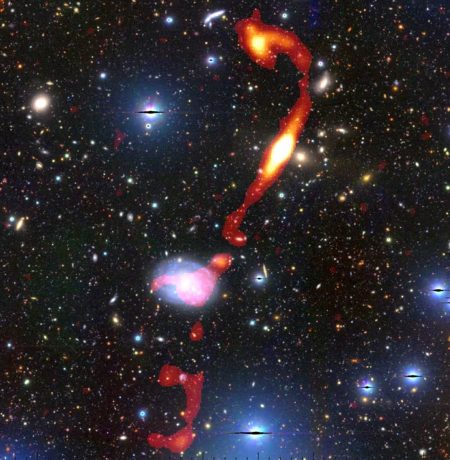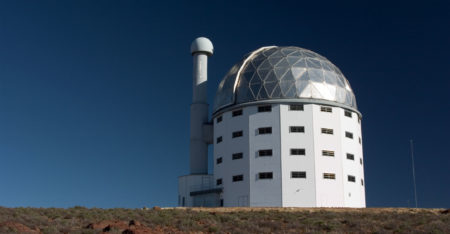
Lengthy negotiations are underway to establish how much each country involved will pay for the first phase of the Square Kilometre Array (SKA) radio telescope, MPs heard on Wednesday.
“The big issue is the funding model,” SKA South Africa project director Bernie Fanaroff told members of parliament’s science and technology portfolio committee. Phase one of the giant project was expected to cost €650m. There’s been a long, long, long negotiation over how much each country’s got to pay and how much it will get back, and how much is in cash and how much in kind.”
The project to build the world’s biggest radio telescope is managed by the international SKA Organisation, which currently comprises 10 countries — Australia, Canada, China, Germany, Italy, Netherlands, New Zealand, South Africa, Sweden and the UK.
So called because the total collecting area of the SKA’s 3 000-dish antenna will be one square kilometre, the telescope will have “central collecting regions” in both Australia and South Africa.
Fanaroff said the SKA’s board of directors last month put a cap on the capital costs for phase one of the project.
“There has now been a detailed study of phase one costs, and the board has decided to cap that cost. We’re now saying we must design the telescope to achieve the science within that cost. The capital cost, as capped by the board, is €650m over the period 2017 to 2023.”
He said this cost would be covered by all members of the SKA Organisation, which was actively recruiting other countries to join. “So, it is possible there will be other contributions. The US will almost certainly come in after 2020. We hope the European Union will find some way of contributing as well.”
He suggested the project’s second and final phase would cost less than the first. “The cost of SKA phase two will only be clear when the design is done … but we expect it to be cheaper, because the technologies will be cheaper by that time.”
Also still being negotiated was the “in-kind contribution” value to be placed on South Africa’s MeerKat radio telescope, which, Fanaroff said, was “on track” and set to deliver its first science in 2017.
It was planned to integrate the MeerKat radio telescope — on completion in 2017 it would comprise 64 antennae — into the SKA in 2021 or 2022.
Fanaroff said the SKA Organisation wanted South Africa and Australia, as the countries in which the telescope was to be located, to contribute more to the cost of its construction than others. However, the two countries had said there was a ceiling on what they could contribute.
He also revealed that some countries had taken a “very hard line” on contributions, but did not say which countries these were. The negotiations on who paid how much “won’t be completed before next year”, he said.
The SKA will be built in South Africa and Australia, with some “outstations” in eight African partner countries — Botswana, Ghana, Kenya, Madagascar, Mauritius, Mozambique, Namibia and Zambia.
Once fully operational, it will be one of the largest science projects in the world, and at least 50 times more powerful and 10 000 times faster than any other radio telescope.
Radio astronomers will use the SKA to understand how stars and galaxies formed, and how they evolved over time. And if there is intelligent life out there, they are hoping their giant instrument will detect it. — Sapa




